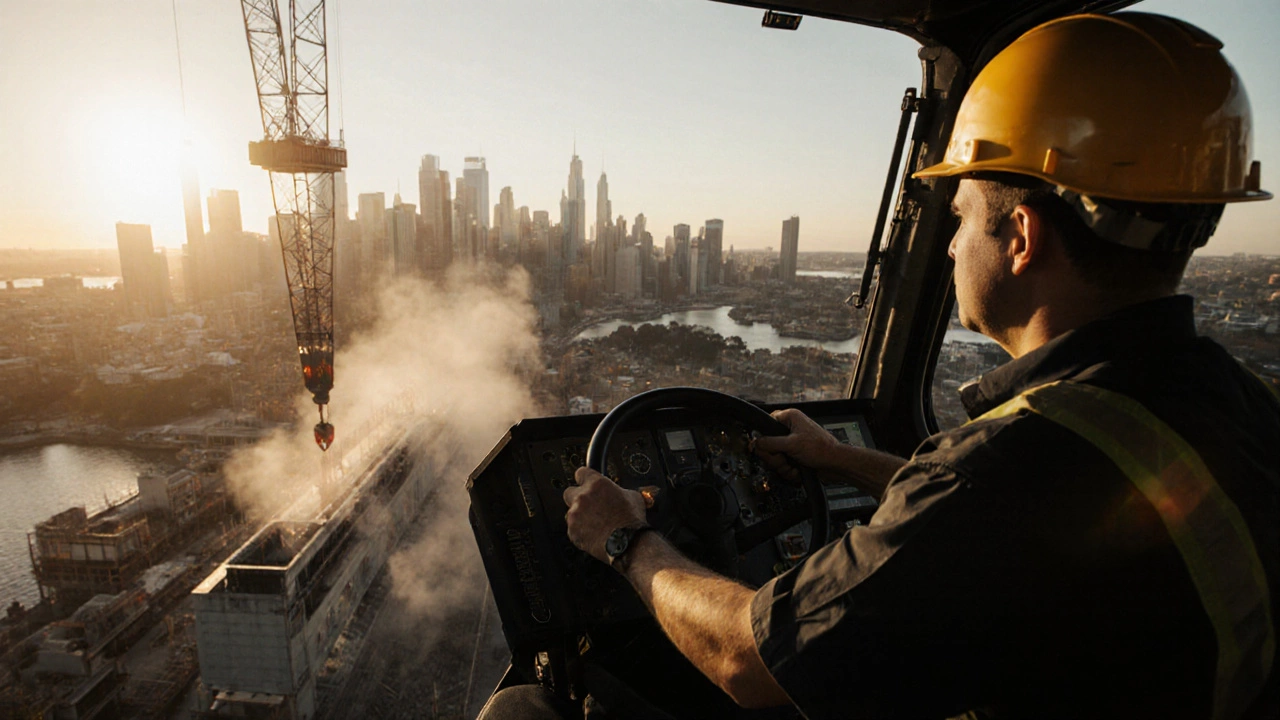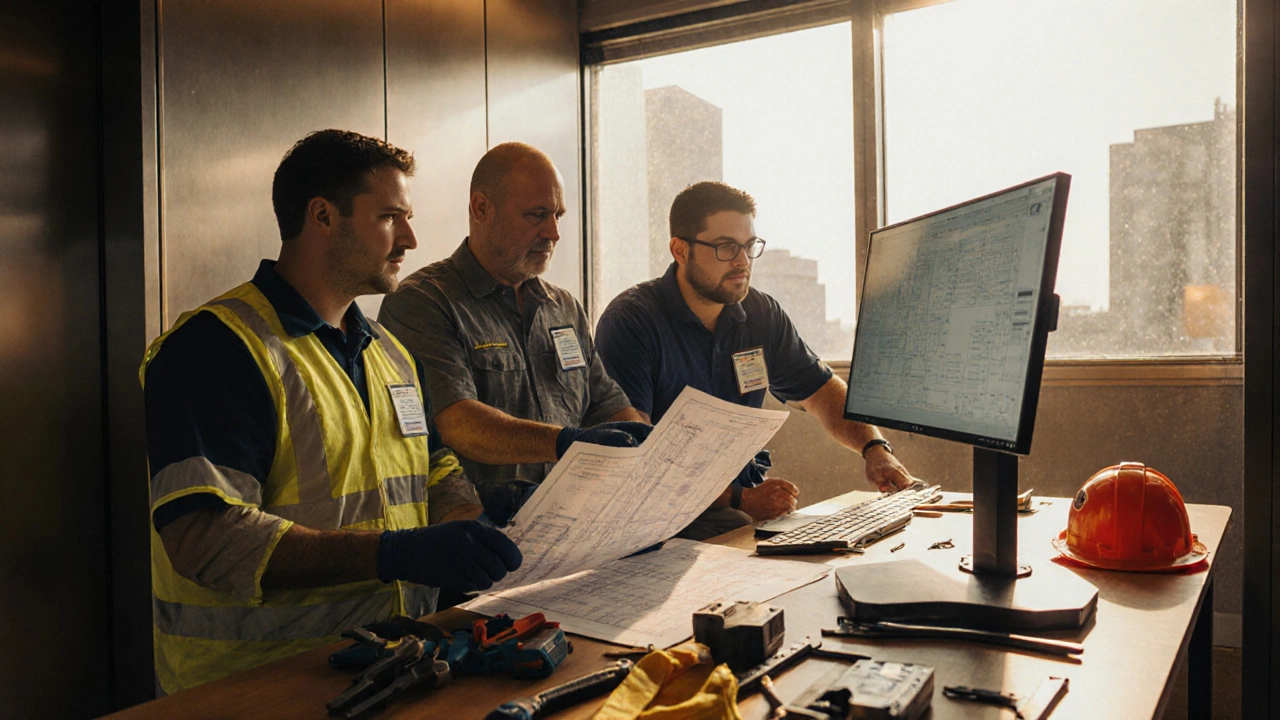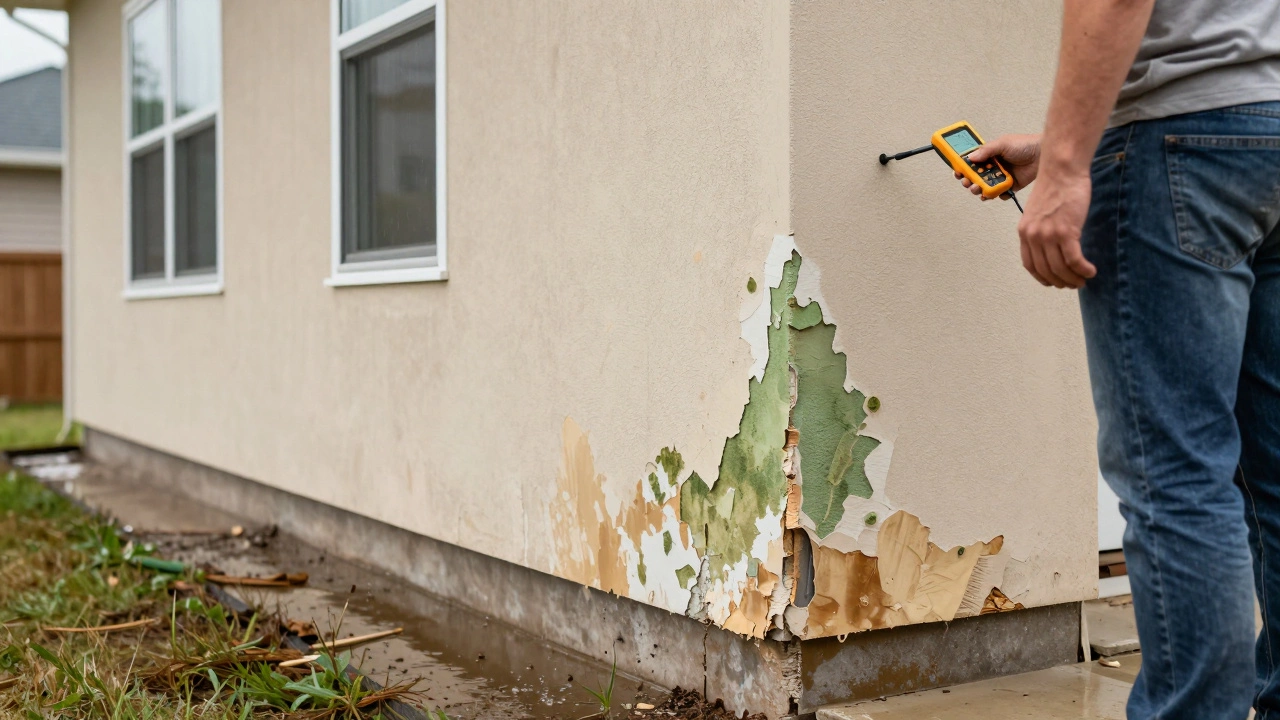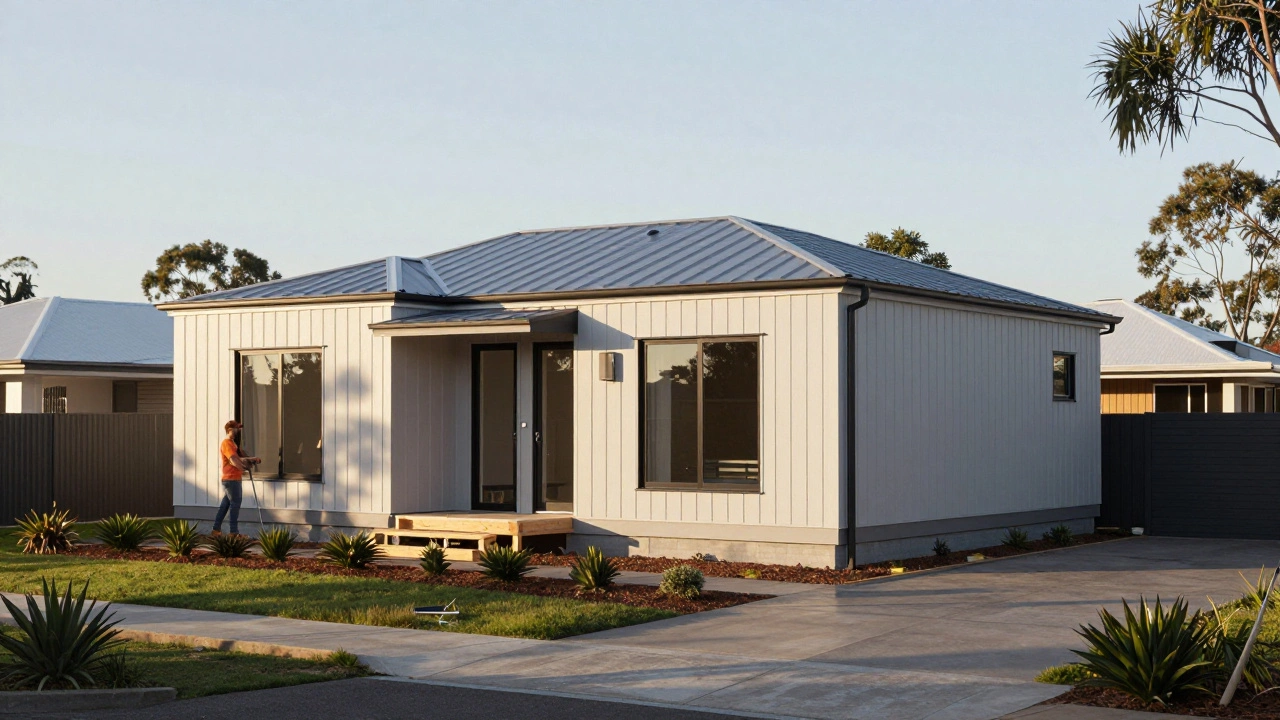Construction Salary Calculator
Estimate Your Construction Salary
Select your role and experience level to see potential earnings in Australia.
Estimated Annual Salary
Your estimated salary range based on your role and experience:
When you think of construction, you might picture workers with hard hats stacking bricks or digging trenches. But the highest-paid jobs in construction aren’t always the ones you see on the ground. Some of the best-paying roles happen behind blueprints, in control rooms, or high above city streets - and they pay significantly more than most people expect.
Construction Manager: The Top Earner
The most paid job in construction is construction manager. These professionals don’t swing hammers or pour concrete, but they hold the entire project together. They handle budgets, schedules, permits, safety compliance, and communication between architects, subcontractors, and clients. In Australia, a senior construction manager earns between $140,000 and $220,000 per year, depending on project size and location. In Melbourne, Sydney, or Perth, where large commercial and infrastructure projects are common, salaries often hit the upper end of that range.
What makes this role so valuable? It’s not just experience - it’s responsibility. A single delay or safety violation on a $50 million building project can cost millions. Construction managers are the ones held accountable. They need a degree in construction management or civil engineering, plus at least five to ten years of field experience. Many also hold certifications like PMP (Project Management Professional) or CCM (Certified Construction Manager).
Other High-Paying Construction Jobs
While construction managers lead the pack, several other roles come close - and some even beat them in specific markets.
- Crane Operators: Especially those working on high-rise buildings or ports. In Australia, experienced crane operators earn $120,000 to $160,000 annually. Specialized roles, like those operating tower cranes on skyscraper projects in Melbourne’s CBD, often command overtime and shift premiums.
- Elevator Installers and Repairers: This job requires technical skill, physical precision, and knowledge of complex electrical systems. In Australia, elevator technicians make $110,000 to $150,000 a year. Demand is rising as older buildings retrofit elevators and new high-rises go up.
- Electrical Engineers (Construction Focus): Not just any electrician - these are engineers who design and oversee power systems for large buildings. They earn $115,000 to $170,000, especially if they work on hospitals, data centers, or airports.
- Project Engineers: These are the technical brains behind the scenes. They translate designs into buildable plans, calculate loads, and ensure materials meet code. Salaries range from $100,000 to $150,000, with bonuses tied to project success.
- Heavy Equipment Supervisors: They manage fleets of bulldozers, excavators, and loaders on major infrastructure jobs. With the right experience, they make $105,000 to $140,000, especially on mining or rail projects.
Why These Jobs Pay More
It’s not just about skill - it’s about risk, responsibility, and scarcity.
Construction managers, crane operators, and elevator technicians all work in high-risk environments. One mistake can mean injury, death, or millions in damages. That’s why companies pay premiums. They’re not just hiring someone who knows how to operate a machine - they’re hiring someone who can make split-second decisions under pressure.
Also, many of these roles require licensing and certification that take years to earn. You can’t just walk into a crane cab after a two-week course. In Australia, crane operators need a High-Risk Work License (HRWL), which requires supervised training, exams, and assessments. Elevator installers must complete a formal apprenticeship and pass strict safety standards.
And there’s a shortage. The construction industry in Australia is facing a skills gap. Older workers are retiring, and not enough young people are entering skilled trades. That’s pushing wages up - especially for roles that require technical expertise and experience.

How to Get Into These High-Paying Roles
If you’re thinking about climbing the ladder in construction, here’s how to get started.
- Start with an apprenticeship: Whether it’s electrical work, plumbing, or carpentry, hands-on training is essential. Most high-paying roles begin as trades.
- Pursue formal education: A Certificate III or Diploma in Construction Management, Engineering, or Project Coordination opens doors. TAFE and universities offer these in Melbourne, Brisbane, and Adelaide.
- Get licensed: Don’t skip this. A crane license, elevator certification, or electrical license isn’t optional - it’s the key to higher pay.
- Build experience on large projects: Work on commercial buildings, hospitals, or infrastructure. These projects pay better and give you the resume you need to move up.
- Network and specialize: Join industry associations like Master Builders Australia or the Australian Institute of Project Management. Specializing in green buildings, BIM (Building Information Modeling), or modular construction can boost your value.
What Doesn’t Pay as Well - And Why
Not every construction job pays top dollar. General laborers, site cleaners, and entry-level carpenters often earn between $60,000 and $85,000. That’s still good money - but it’s far below the top tier.
Why the gap? These roles require less specialized training, have lower risk, and are easier to replace. A general laborer can be hired on a daily basis. A construction manager? You need them for the life of the project.
Also, many of the lower-paying jobs are seasonal or contract-based. High-paying roles are usually salaried, with benefits, superannuation, and job security.

Is It Worth It?
Yes - if you’re willing to put in the time. The path to a $180,000 salary in construction isn’t quick. It takes 8 to 15 years of steady progress: starting as a laborer, then a trade apprentice, then a supervisor, then a manager or engineer.
But the payoff is real. Unlike office jobs where promotions are tied to politics or tenure, construction rewards tangible skills, reliability, and results. If you’re good at solving problems under pressure, managing people, or working with complex machinery, this industry pays exceptionally well.
And with Australia’s infrastructure boom - new rail lines, hospitals, and housing developments - demand for skilled leaders in construction isn’t going away. In fact, it’s growing.
What About Remote or Office-Based Construction Jobs?
Some people assume the highest-paid roles are all on-site. But many top earners work mostly in offices - reviewing plans, coordinating with engineers, running software like Procore or Autodesk BIM 360. Construction managers, project engineers, and estimators often spend 70% of their time in meetings or at desks. They’re still part of the construction team - just not standing in the mud.
These roles are perfect for people who like structure, data, and planning but don’t want to be on a job site every day.
Final Thoughts
The most paid job in construction isn’t about muscle - it’s about mastery. It’s about knowing how to lead, how to prevent disaster, and how to deliver a project on time and on budget. If you’re looking for a career that pays well, offers stability, and gives you real impact, construction has more options than most people realize.
Start with a trade. Build your skills. Get certified. Take on bigger projects. The money follows the responsibility.
What is the highest paying construction job in Australia?
The highest paying construction job in Australia is construction manager. Salaries range from $140,000 to $220,000 per year, especially on large commercial or infrastructure projects in major cities like Melbourne, Sydney, or Perth. These professionals oversee budgets, timelines, safety, and teams, making them critical to project success.
Do crane operators make good money in construction?
Yes. Experienced crane operators in Australia earn between $120,000 and $160,000 annually. Those working on high-rise buildings or in ports often earn more due to shift work, overtime, and specialized licensing. A High-Risk Work License (HRWL) is required, and demand is high in growing cities.
How do I become a construction manager?
Start with a trade apprenticeship (carpentry, electrical, etc.), then gain 5-10 years of field experience. Pursue a Diploma or Bachelor’s in Construction Management or Civil Engineering. Get certified with PMP or CCM. Many construction managers begin as site supervisors or project engineers before moving into management roles.
Is construction a good career for long-term earning?
Absolutely. Unlike many industries where pay plateaus after a few years, construction rewards experience. The more complex the projects you manage, the higher your salary. With the right certifications and track record, it’s common to earn over $150,000 by your late 30s or early 40s - without needing a corporate promotion.
Are there high-paying construction jobs that don’t require being on-site all day?
Yes. Project engineers, estimators, and construction managers often work mostly in offices, using software like BIM 360 or Procore to coordinate projects. They still lead construction efforts but spend less time in the field. These roles pay $100,000-$170,000 and are ideal for people who prefer planning over physical labor.






